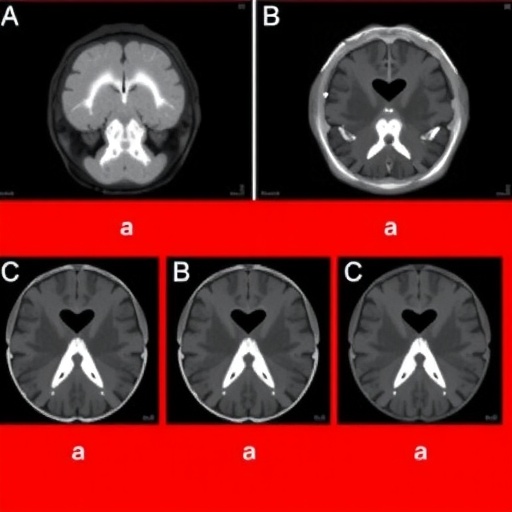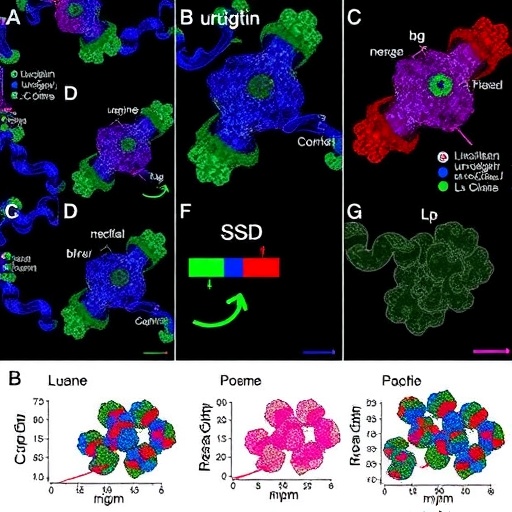
In the battle against cervical cancer—a leading cause of female cancer mortality worldwide—accurate tumor staging remains a pivotal step in guiding treatment strategy and improving patient prognoses. A recently published study in BMC Cancer sheds new light on the comparative effectiveness of magnetic resonance imaging (MRI) and clinical examination (CE) for staging cervical cancer, focusing on a population in Nepal, where healthcare limitations pose significant challenges. This retrospective analysis, encompassing data from 76 patients treated at a tertiary care center between 2020 and 2023, reveals crucial insights into the interplay of advanced imaging techniques and traditional clinical staging methods.
Cervical cancer presents an acute public health concern in countries like Nepal, where diagnostic delays and insufficient screening exacerbate disease burden. The International Federation of Gynecology and Obstetrics (FIGO) revised its staging guidelines in 2018 to include MRI as a critical adjunct to clinical examination. MRI, with its superior soft tissue contrast and multiplanar capabilities, promises enhanced detection of tumor spread beyond the cervix that clinical palpation may miss. However, real-world concordance between these modalities—and implications for patient management in resource-constrained environments—remain underexplored until now.
The study draws on a comprehensive cohort from Purbanchal Cancer Hospital where MRI protocols employed a 1.5 Tesla scanner with key sequences: T2-weighted imaging, diffusion-weighted imaging (DWI), and gadolinium-based contrast enhancement. These sequences enable detailed evaluation of tumor size, stromal invasion, parametrial extension, and lymph node involvement. Clinical staging incorporated thorough pelvic examinations coupled with histopathologic confirmation via punch or cone biopsies, adhering strictly to FIGO 2018 criteria.
.adsslot_bHqR1PLSGA{width:728px !important;height:90px !important;}
@media(max-width:1199px){ .adsslot_bHqR1PLSGA{width:468px !important;height:60px !important;}
}
@media(max-width:767px){ .adsslot_bHqR1PLSGA{width:320px !important;height:50px !important;}
}
ADVERTISEMENT
With a median patient age in the 50–59 years bracket and squamous cell carcinoma comprising over 88% of cases, the cohort reflects the typical epidemiology of cervical cancer in low- and middle-income countries. Most patients were categorized as stage IIB—indicating parametrial invasion without pelvic wall involvement—highlighting the advanced nature of disease presentation endemic to underserved regions. Dissecting the concordance between MRI and clinical examination revealed a moderate agreement level, with Cohen’s kappa at 0.58. This figure underscores significant areas of overlap but also exposes diagnostic discrepancies that can influence therapeutic decisions.
Specifically, MRI upstaged nearly 16% of cases by unveiling occult parametrial or nodal disease not detected on clinical exam. These findings are clinically momentous, potentially converting patients from surgical candidates to those needing chemoradiation. Conversely, MRI downgraded 21% of patients compared with clinical staging, frequently underestimating the depth of stromal invasion—a limitation warranting further investigation given its role in prognosis and radiotherapy planning. The sensitivity of MRI in this context stood at 63.2%, with a positive predictive value of 75%, reflecting reasonable but not infallible accuracy.
The discordance highlights MRI’s dual-edged nature in cervical cancer staging. While it enhances detection of subtle parametrial or nodal involvement—crucial for tailoring concurrent chemoradiotherapy (CCRT) and intracavitary brachytherapy (ICBT)—MRI cannot supplant clinical examination. The latter remains indispensable, particularly in settings lacking access to high-quality imaging infrastructure and trained radiologists. Indeed, treatment records indicated suboptimal utilization of CCRT and ICBT, largely attributable to resource constraints culled from missing or limited treatment data in nearly half of the cohort.
This study, therefore, underscores the necessity for a balanced, integrative approach leveraging both modern imaging and established clinical acumen. It also spotlights the urgent need for standardized MRI protocols tailored to low-resource settings, ensuring reproducibility and optimal scanning parameters. Moreover, integrating MRI findings systematically into multidisciplinary tumor boards could refine stage-driven treatment choices, improving survival outcomes.
From a technical vantage, the reliance on 1.5T MRI systems is significant. While widely available, 1.5T scanners offer lower signal-to-noise ratio compared to 3T, potentially blunting subtle lesion detection. Future research might explore augmented sequences or higher field strength scanners, assessing incremental benefits against cost and accessibility. Diffusion-weighted imaging, included in this study, remains a powerful functional tool to differentiate tumor tissue from inflammation or necrosis, deserving broader implementation.
Another dimension warranting attention is the interpretation variability inherent to both clinical and radiological staging. Enhanced training for gynecologic oncologists and radiologists in MRI-based staging could harmonize assessments, while artificial intelligence-driven image analysis holds promise for augmenting diagnostic accuracy. These advances, however, must confront infrastructural hurdles, ranging from scanner availability to electronic health record integration in resource-limited environments like Nepal.
The retrospective design of the study, while pragmatic, introduces inherent limitations including incomplete treatment documentation and potential selection biases. Prospective, multicenter studies with larger cohorts and standardized data collection will be vital in substantiating and expanding these findings. Moreover, evaluating patient outcomes in relation to MRI-CE concordance could elucidate how staging accuracy translates into real-world survival benefits and quality of life improvements.
In conclusion, the Nepalese experience with cervical cancer underscores broader global health challenges wherein cutting-edge diagnostic modalities coexist with traditional clinical judgment amid resource scarcity. MRI emerges as a formidable ally, improving detection of occult disease and refining staging accuracy, yet it fails to replace the indispensable value of hands-on clinical examination. Optimal care demands synergistic application of both, underpinned by enhanced infrastructure, training, and prospective research to forge tailored treatment pathways.
As cervical cancer continues to claim lives disproportionately in developing regions, bridging diagnostic gaps through sustainable technological integration remains paramount. This study’s revelations encourage not only Nepalese clinicians but the wider oncology community to rethink staging paradigms, ensuring that innovations like MRI grow from aspirational technologies into accessible standards of care. The journey towards this future entails multi-sector collaboration, investment in healthcare systems, and relentless commitment to evidence-based practice, ultimately transforming cervical cancer outcomes on a global scale.
Subject of Research:
Concordance between MRI and clinical examination in staging cervical cancer in a resource-limited setting
Article Title:
Concordance between MRI and clinical examination in cervical cancer staging: a retrospective study
Article References:
Sharma, U., Yadav, B.K., Rai, U. et al. Concordance between MRI and clinical examination in cervical cancer staging: a retrospective study. BMC Cancer 25, 1098 (2025). https://doi.org/10.1186/s12885-025-14475-4
Image Credits:
Scienmag.com
DOI:
https://doi.org/10.1186/s12885-025-14475-4
Tags: advanced imaging techniques in oncologycervical cancer staging accuracycervical cancer treatment strategiesFIGO staging guidelines 2018improving cervical cancer diagnosisMRI versus clinical examinationNepal healthcare challengespatient prognosis in cervical cancerresource-constrained healthcare environmentsretrospective analysis of cancer datasoft tissue imaging in cancertumor detection using MRI





